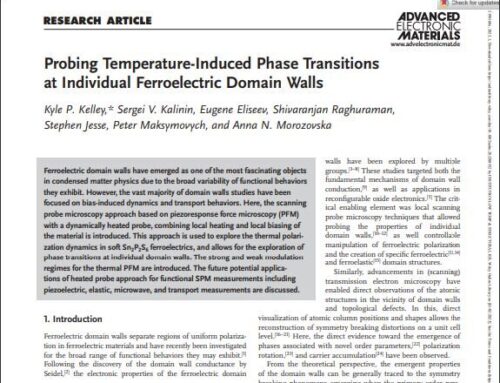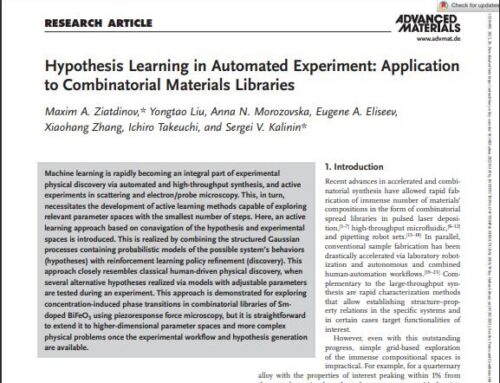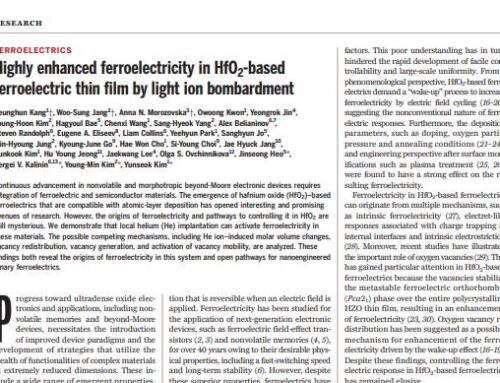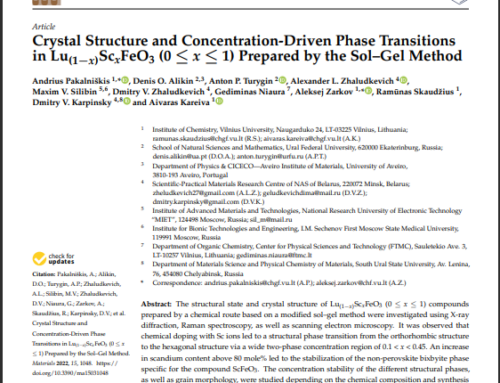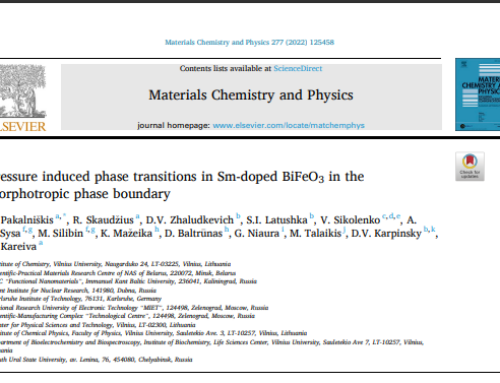Abstract: Having been considered as a prime example of a room-temperature magnetoelectric multiferroic, BiFeO3 continues to attract much interest. Since functional properties of this material can be effectively influenced by chemical, electrical, magnetic, mechanical and thermal stimuli, it can serve as a model for the investigation of cross-coupling phenomena in solids. Special attention is currently paid to the study of chemical pressure-driven magneto-structural transformations. In this paper, we report on the effect of the Mn doping on the crystal structure and magnetic behavior of the Bi1−x La xFeO3 multiferroics near their polar-antipolar (antiferromagnetic-weak ferromagnetic) phase boundary. Synchrotron x-ray and neutron powder diffraction measurements of the Bi0.86La0.14Fe1−xMn x O3 (x = 0.05, 0.1, 0.15) compounds have been performed. The diffraction data suggest that the Mn substitution results in the suppression of the ferroelectric polarization and gives rise to the appearance of the antiferroelectric (generally, PbZrO3-related) phase characteristic of the phase diagrams of the Bi1−x RE x FeO3 (RE = rare-earth) systems. Depending on the Mn concentration (determining phase composition of the Bi0.86La0.14Fe1−x Mn x O3 samples at room temperature), either complete or partial revival of the polar phase can be observed with increasing temperature. Magnetic measurements of the samples indicate that the Mn doping affects the stability of the cycloidal antiferromagnetic order specific to the polar phase, thus resulting in the formation of a ferroelectric and weak ferromagnetic state.
Title: Polar-antipolar transition and weak ferromagnetism in Mn-doped Bi0.86La0.14FeO3
Authors: V. A. Khomchenko, D. V. Karpinsky, I. O. Troyanchuk, V. V. Sikolenko, D. M. Többens, M. S. Ivanov, M. V. Silibin, R. Rai, J. A. Paixão
DOI: https://doi.org/10.1088/1361-6463/aab58f J. Phys. D: Appl. Phys. (2018) 51, 165001
Preprint deposited in the repository: http://hdl.handle.net/10316/81273

